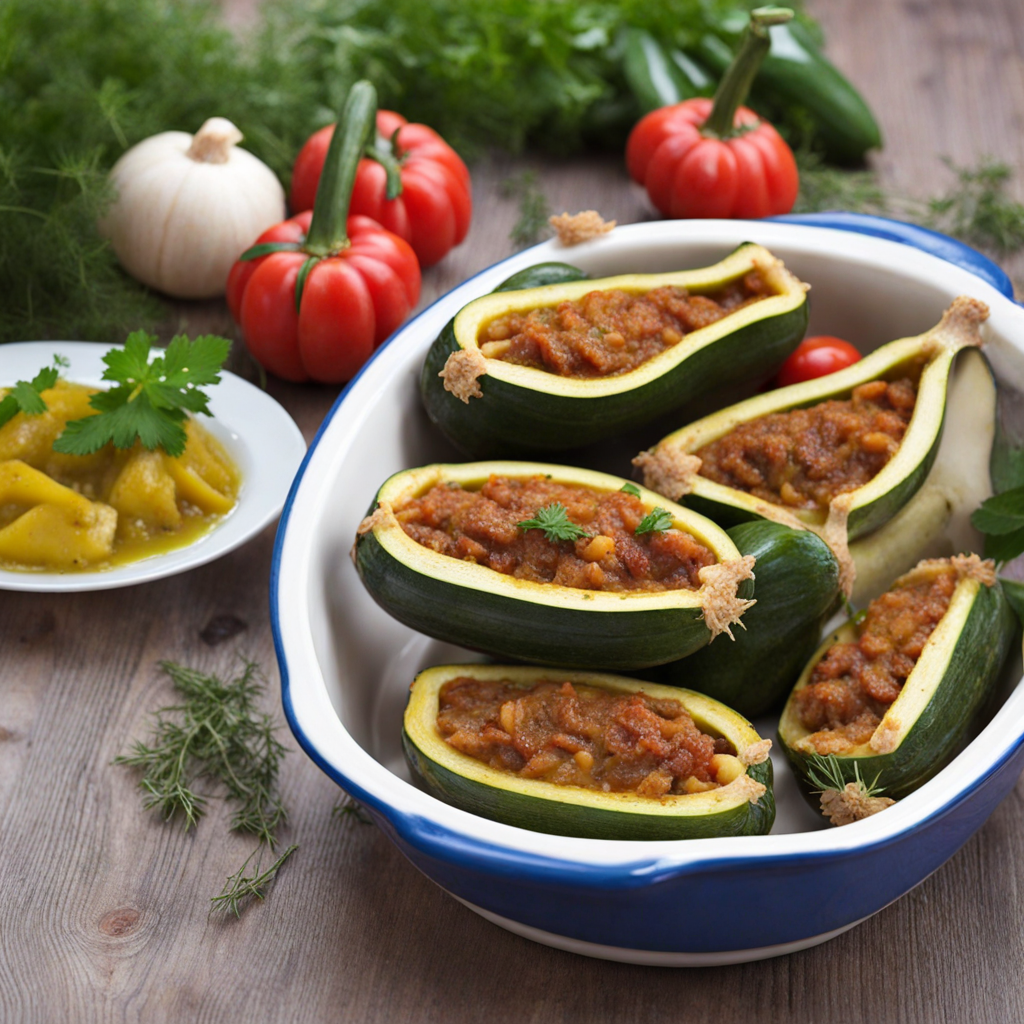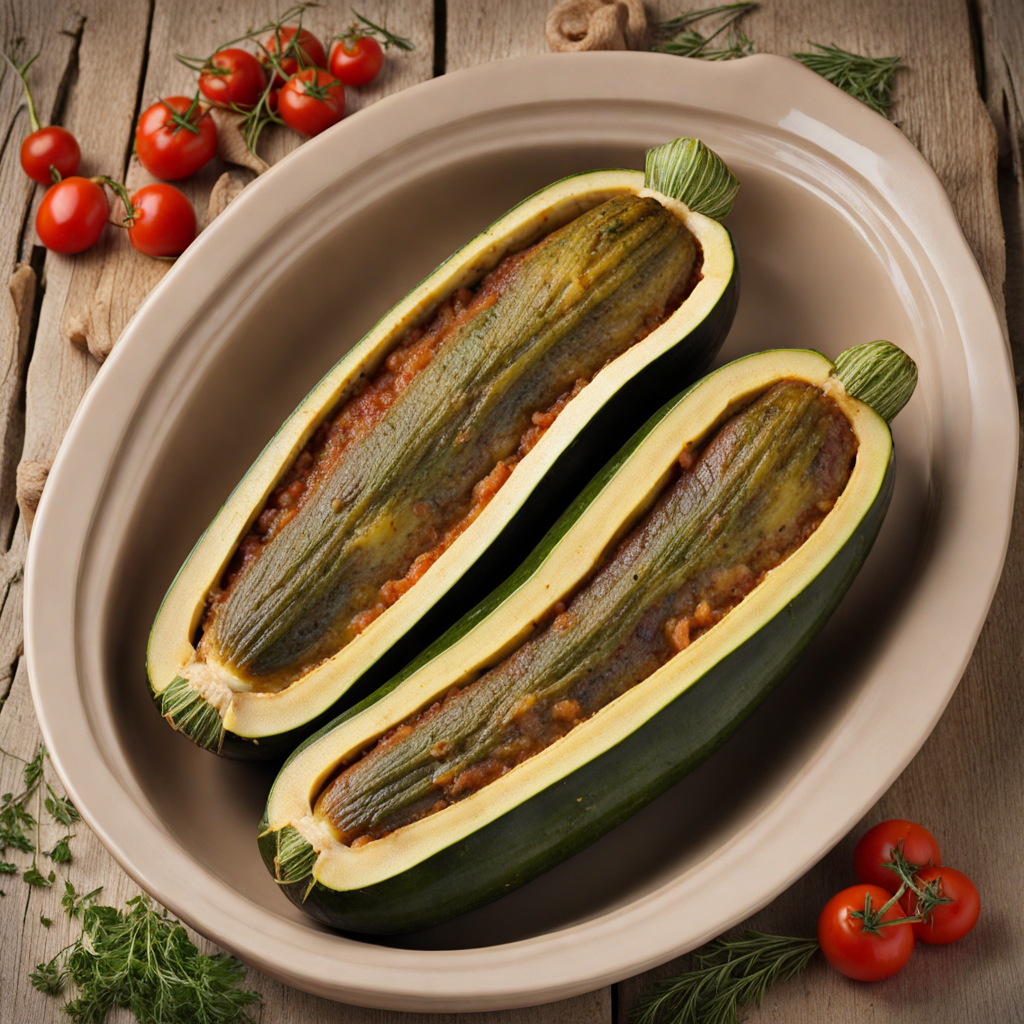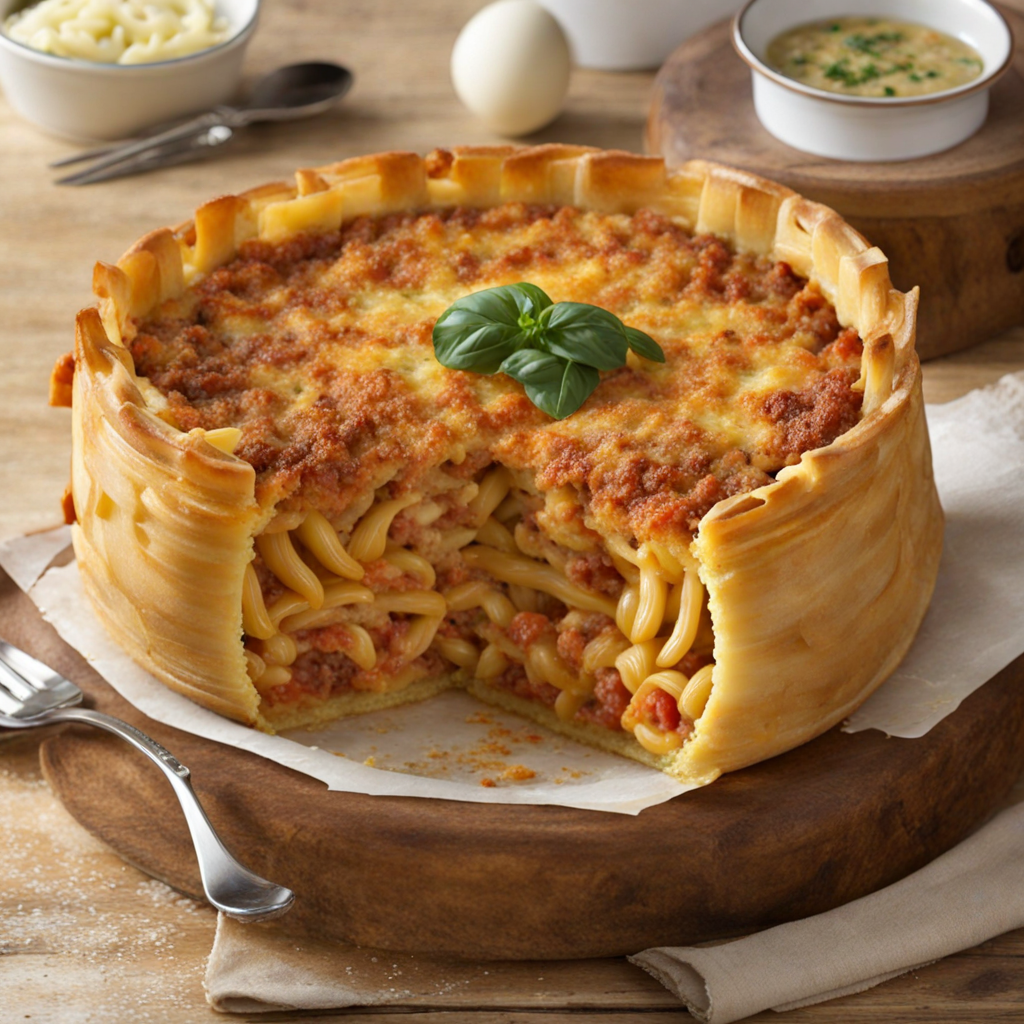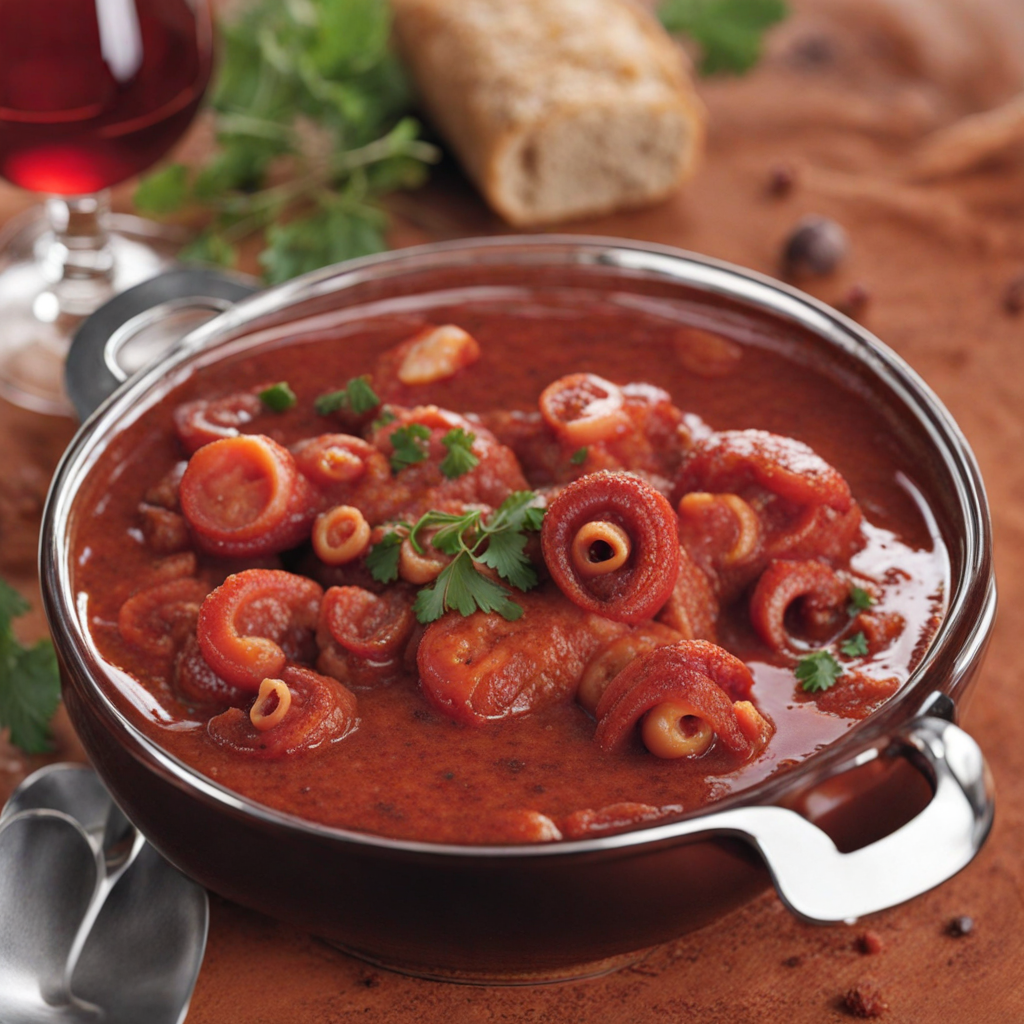Stuffed Marrows
Stuffed Marrows, or "Zucchini Stuffed with Minced Meat," is a delectable dish that showcases the rich culinary traditions of Malta. This dish features tender marrows, also known as zucchinis, which are hollowed out and filled with a savory mixture of minced meat, often a blend of beef and pork, along with fresh herbs, tomatoes, and spices. The natural sweetness of the marrow complements the savory filling, creating a harmonious balance of flavors that is both comforting and satisfying. Each bite reveals the juicy filling, enhanced by the subtle earthiness of the marrow, making it a truly enjoyable experience for those looking to explore new tastes. The preparation of Stuffed Marrows is an art in itself, as the marrows must be carefully cleaned and prepared to ensure the filling is perfectly encased within. The stuffing is typically seasoned with local ingredients such as garlic, onion, and sometimes even a hint of chili for a gentle kick. After being stuffed, the marrows are often baked in a rich tomato sauce, allowing the flavors to meld together beautifully while the marrows soften and absorb the sauce's tanginess. This method of cooking not only enhances the taste but also results in a beautifully presented dish, with vibrant colors and mouthwatering aromas that appeal to the senses. As you delve into this Maltese delicacy, you'll find that Stuffed Marrows encapsulate the essence of Mediterranean cuisine—simple yet bold flavors, fresh ingredients, and a focus on wholesome, hearty meals. It is a dish that speaks to the warmth of Maltese hospitality, often enjoyed as a family meal or at festive gatherings. With its unique combination of flavors and textures, Stuffed Marrows is an invitation to explore the culinary diversity of Malta and discover a taste that is both familiar and delightfully new.
How It Became This Dish
Qarabali Mimli: A Culinary Journey Through Malta #### Origins in Maltese Cuisine Qarabali Mimli, often translated as "stuffed marrows," is a quintessential dish from Malta that reflects the island's rich culinary heritage. The dish primarily features the local variety of marrow or squash, which is hollowed out and filled with a savory mixture typically comprising minced meat, rice, herbs, and spices. This dish embodies the fusion of various cultural influences that have shaped Maltese cuisine over the centuries, drawing from Arabic, Italian, and British culinary traditions. The origins of Qarabali Mimli can be traced back to the Arab occupation of Malta from 831 to 1091 AD. During this period, the Arabs introduced numerous ingredients and cooking techniques that would become staples in Maltese cooking. The use of stuffed vegetables, particularly courgettes and marrows, is a technique that has its roots in Middle Eastern cuisine. Vegetables filled with rice and meat were a practical way to create a hearty meal using minimal resources, an idea that resonates with the traditional Maltese ethos of frugality in cooking. #### Cultural Significance Qarabali Mimli holds a special place in Maltese culture, particularly as a dish that is often prepared for family gatherings, celebrations, and festivals. It is not just a meal but a symbol of togetherness and community. Traditionally, families would gather in kitchens, sharing stories and laughter while preparing the dish together. This communal aspect of cooking reinforces family bonds and serves as a way to pass down culinary traditions from one generation to the next. Moreover, Qarabali Mimli is often associated with the feast days of Saint Paul, one of Malta’s patron saints. The dish, like many Maltese foods, reflects the island’s Catholic heritage. During these feast days, it is common for families to prepare elaborate meals to celebrate, and Qarabali Mimli often finds a place at the table, showcasing its importance in the culinary repertoire of Maltese festivities. #### Ingredients and Preparation The ingredients used in Qarabali Mimli are deeply linked to Malta’s agricultural landscape. The marrows used in the dish thrive in the island's Mediterranean climate. The filling usually contains minced beef or lamb, rice, finely chopped onions, garlic, and a medley of herbs such as parsley and mint. Spices such as black pepper, cinnamon, and sometimes a pinch of saffron add depth to the flavor profile. The combination of these ingredients results in a dish that is both hearty and aromatic, reflecting the bounty of the land. Preparing Qarabali Mimli involves a few steps: the marrows are first cut in half, seeded, and then filled with the savory mixture. They can be baked, steamed, or even cooked in sauce, depending on regional variations and personal preferences. The cooking process allows the flavors to meld beautifully, with the marrow absorbing the savory filling while remaining tender and flavorful. #### Evolution Over Time As Malta evolved through various historical phases—from the rule of the Knights of St. John to British colonial rule—so too did its cuisine. The British influence, particularly in the 19th and early 20th centuries, introduced new ingredients and cooking methods that would subtly alter the preparation of traditional dishes like Qarabali Mimli. Ingredients such as canned tomatoes, Worcestershire sauce, and even cheese began to find their way into Maltese kitchens, enriching the culinary landscape. In more modern times, Qarabali Mimli has experienced a resurgence in popularity, particularly as an emblem of Maltese cuisine. The rise of the farm-to-table movement has ushered in a renewed interest in traditional dishes that highlight local produce and seasonal ingredients. Chefs across Malta are celebrating this dish by reinterpreting it in contemporary ways, experimenting with fillings such as seafood or vegetarian alternatives, and presenting it with a modern twist while respecting its traditional roots. Tourism has also played a significant role in the evolving narrative of Qarabali Mimli. As Malta has become a popular destination for foodies seeking authentic culinary experiences, local restaurants and agritourism farms have started offering cooking classes and food tours that feature this iconic dish. Visitors are not just learning to cook Qarabali Mimli but are also immersing themselves in the cultural and historical context that surrounds it. #### Contemporary Maltese Cuisine Today, Qarabali Mimli is celebrated as part of the national identity of Malta. It frequently appears on menus in traditional restaurants and is often served at special occasions, from weddings to family celebrations. The dish has become a point of pride for many Maltese, embodying the resilience and adaptability of their culinary heritage. Furthermore, the dish has gained international recognition, partly due to social media and food blogging, which have brought global attention to Maltese cuisine. This exposure has encouraged more chefs to explore and innovate traditional dishes, ensuring that they remain relevant in the ever-changing culinary landscape. #### Conclusion Qarabali Mimli is much more than just a stuffed vegetable; it is a narrative of Malta's history, culture, and community. From its origins during the Arab occupation to its place in contemporary Maltese cuisine, this dish encapsulates the island's journey through time, reflecting the influences of various cultures while remaining true to its roots. Whether served at a family gathering, a feast day celebration, or in a trendy restaurant, Qarabali Mimli continues to be a beloved dish that nourishes both the body and the spirit, reminding us of the importance of tradition in a rapidly changing world. Its evolution is a testament to the enduring nature of culinary heritage and the shared love for food that transcends generations.
You may like
Discover local flavors from Malta







